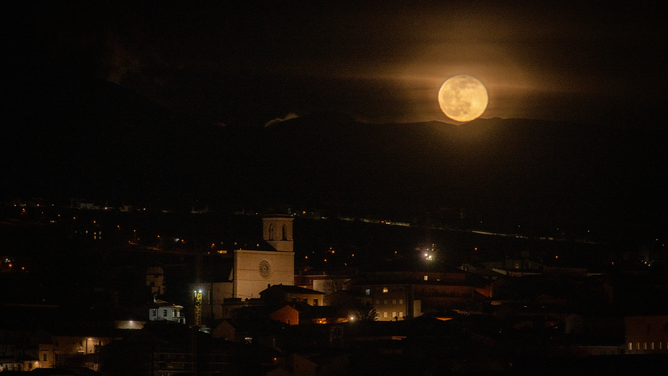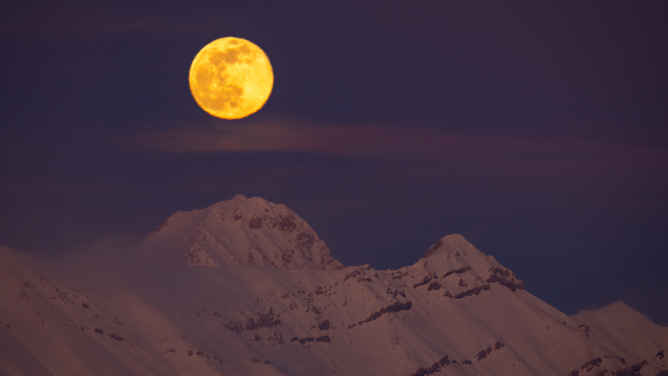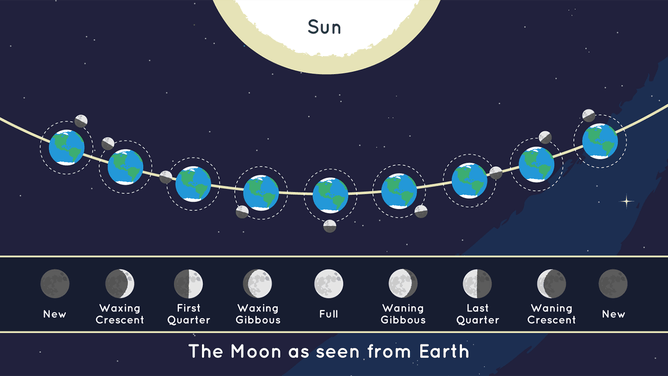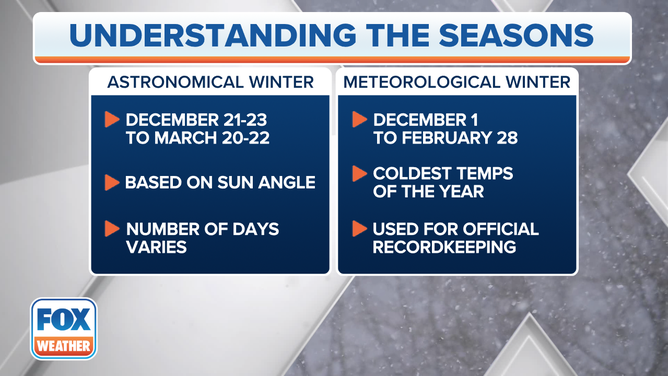Full Snow Moon: When and where to see second full Moon of 2024 this week
The Snow Moon, which rises in the east, will reach its peak around 7:30 a.m. EST on Saturday, so it will be better to try and catch a glimpse of the Snow Moon before sunrise on Saturday or after sunset Saturday night.
2024 Moon phases for the Northern Hemisphere
NASA produced rendering of the Moon's phases during 2024.
The second full Moon of 2024 will light up the night sky on Saturday – if the weather in your area cooperates.
The Snow Moon, which rises in the east, will reach its peak around 7:30 a.m. EST on Saturday, so it will be better to try and catch a glimpse of the Snow Moon before sunrise on Saturday or after sunset Saturday night.

Snow Moon rises above San Silvestro bell tower church in LAquila, Abruzzo (Italy), on Feb. 6, 2023. February's full Moon is usually called Snow Moon and is the smallest Moon of the year (on Feb. 4, the Moon reached its apogee, its farthest point from Earth). (Photo by Lorenzo Di Cola/NurPhoto via Getty Images)
(Getty Images)
You'll want to be farther west in the U.S. if you're hoping to see the exact moment the Moon is full. For example, the U.S. Naval Observatory shows that in New York City, the Moon sets, or drops below the horizon, at 6:58 a.m. EST Saturday morning.
In Chicago, the full Moon is at 6:30 a.m. CST, and the Moon sets at 6:55 a.m. CST. Meanwhile, in Los Angeles, the full Moon is at 4:30 a.m. PST, giving people there plenty of time as the Moon doesn't set until 6:49 a.m. PST.
WATCH OUT FOR THESE ASTRONOMICAL EVENTS IN 2024

Snow Moon rises behind Corno Grande and Pizzo Cefalone peaks (Gran Sasso dItalia National Park) in LAquila, Abruzzo (Italy), on Feb. 5, 2023. February's full Moon is usually called Snow Moon. (Photo by Lorenzo Di Cola/NurPhoto via Getty Images)
(Getty Images)
The nickname of February's full Moon, the Snow Moon, is due to the typically heavy snow on the ground and because of cold temperatures in the northern latitudes.
And this full Moon won't be as large as it usually is in the night sky.
7 TIPS ON HOW TO SHOOT THE MOON WITH A CAMERA

This graphic shows the position of the Moon and the Sun during each of the Moon’s phases and the Moon as it appears from Earth during each phase. Not to scale.
(NASA/JPL-Caltech / NASA)
The Moon will be at one of its farthest points from Earth and is known as a micromoon.
On an average day, the Moon is about 238,000 miles away from Earth, but during a micromoon phase, the distance increases to about 252,000 miles.
STUNNING VIDEO SHOWS MERCURY PASSING BY THE SUN

The start of winter depends on whether you're referring to the astronomical or the meteorological start.
(FOX Weather)
Since the lunar body's full cycle lasts 29.5 days, this full Moon is occurring before meteorological winter ends.
Meteorological winter runs from Dec. 1 to Feb. 28 (or Feb. 29), and March 1 is considered to be the start of meteorological spring by meteorologists and climatologists.
